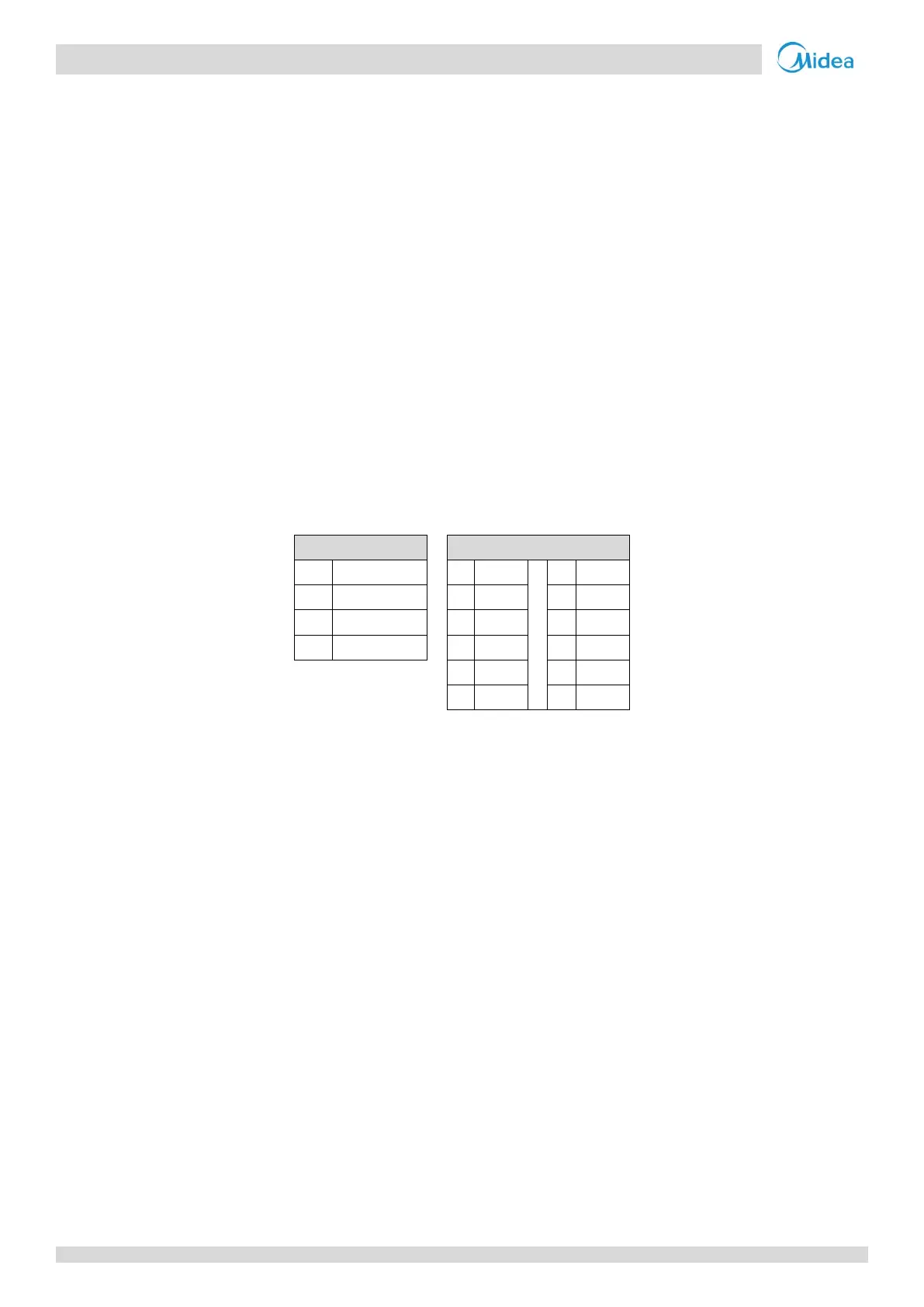VC Pro VRF 50/60Hz
186
Midea VC Pro Series Engineering Data Book
10.3 Inspection and maintenance
In addition to standard outdoor unit servicing and maintenance, the following additional inspections and maintenance
should be undertaken for outdoor units installed in seaside locations:
A comprehensive post-installation inspection should check for any scratches or other damage to painted surfaces and
any damaged areas should be repainted/repaired immediately.
The units should be regularly cleaned using (non-salty) water to remove any salt that has accumulated. Areas cleaned
should include the condenser, the refrigerant piping system, the outside surface of the unit casing and the outside
surface of the electric control box.
Regular inspections should check for corrosion and if necessary corroded components should be replaced and/or anti-
corrosion treatments should be added.
11 Commissioning
11.1 Outdoor Unit Address and Capacity Settings
Before running a system for the first time, set each outdoor unit’s address on switch ENC1 on each outdoor unit’s main PCB.
Refer to Table 3-11.1. The capacity of each outdoor unit (on switch ENC2 on each outdoor unit’s main PCB) is factory-set and
should not need changing. Check that the capacity settings are correct. Refer to Table 3-11.1.
Table 3-11.1: Outdoor unit address and capacity settings
11.2 Multi-system Projects
For projects with multiple refrigerant systems, each independent refrigeration system (i.e. each system of up to three
outdoor units and their connected indoor units) should be given a test run independently, before the multiple systems that
make up a project are run simultaneously.
11.3 Pre-commissioning Checks
Before turning on the power to the indoor and outdoor units, ensure the following:
1. All indoor and outdoor refrigeration piping and communication wiring has been connected to the correct refrigeration
system and the system to which each indoor and outdoor unit belongs is clearly marked on each unit or recorded in
some other suitable place.
2. Pipe flushing, gastightness testing and vacuum drying have been satisfactorily completed as per instructions.
3. All condensate drain piping is complete and a watertightness test has been satisfactorily completed.
4. All power and communication wiring is connected to the correct terminals on units and controllers. (Check that the
different phases of the 3-phase power supplies have been connected to the correct terminals).
5. No wiring has been connected in a short-circuit.
6. The power supplies to indoor and outdoor units have been checked and the power supply voltages are within ±10% of
the rated voltages for each product.
7. All control wiring is 0.75mm
2
three-core shielded cable and the shielding has been grounded.
8. The outdoor units’ address and capacity switches are set correctly (see Part 3, 11.1 “Outdoor Unit Address and Capacity
Settings”) and all other indoor and outdoor unit field settings have been set as required.
9. The additional refrigerant charge has been added as per Part 3, 8 “Charging Refrigerant”. Note: In some circumstances
